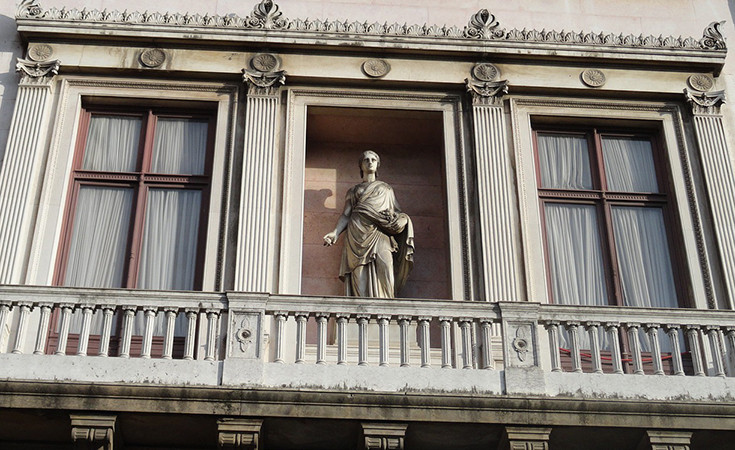
The Catete Palace or Museum of the Republic is an urban villa in the city’s Flamengo district. The property stretches from Catete Street to Flamengo Beach. Construction of the museum began in 1858 and was completed a decade later, in 1867. From 1897 to 1960, the palace was the Brazilian presidential palace. This is also the place where Getúlio Vargas committed suicide. He was a Brazilian lawyer and politician, and was appointed president twice. Today, the palace houses the Museum of the Republic and the theater.
The building was built as the residence of the family of Portuguese-born Brazilian coffee maker António Clemente Pinto. The main architect of the project was the German Karl Friedrich Gustav. Construction lasted from 1858 to 1866, but finishing on the facade lasted for another whole decade.
Antônio Clemente Pinto sold the estate in 1889 after the death of his parents. This happened just before the proclamation of the Republic of Brazil, he sold it to group of investors, who founded the Grande Hotel Internacional Company hotel. Due to the economic crisis that occurred in the late 1880s and early 1890s, many investors went bankrupt, and the luxury hotel never even opened.
After taking over the presidency, Vice President Manuel Vitorino set the seat of government in the Catete Palace. Officially, the palace was the seat of the Federal Government from 1897 to 1960. Various historical events took place in the corridors of the palace, such as the death of President Afonso Pena in 1909; signing the declaration of war against the German Empire and its allies in 1917 (World War I); a visit by Pope Pius XII in 1934 while he was still a cardinal; the declaration of war against the Axis in World War II in 1942 and the suicide of President Getúlio Vargas in 1954, with a shot to the heart.
In the palace, you will be able to see numerous halls that could only be enjoyed by Brazilian presidents and government representatives. You will be delighted by the details of the ceiling of the Pompeano Hall, with a display of historical dates, such as the reform of the Presidency of the Republic from 1896. You will also have the opportunity to see the richly decorated Venetian room, and pay special attention to the upper part of the wall of the Moorish hall, with reliefs made in the Arabic style and a fresco depicting a man in a typical North African uniform.
There is also a salon for banquets and receptions, as well as an amazing garden that covers an area of 24.000 m2.
The Nobre Hall or the ballroom is reminiscent of the social life and luxury of the court. The main receptions of the palace were held there. The vertical paintings represent mythological scenes related to music and art, and the semicircular paintings on the upper part of the walls refer to the life of Apollo, the god of music and poetry.
The museum is really impressive and worth a visit. After all, you don’t have the opportunity to see the Palace of the Republic every day.
 Ticket price for the Catete Museum
Ticket price for the Catete Museum
Regular ticket price 6 BRL
Free entrance on Wednesdays and Sundays
 Opening hours of the Catete Museum
Opening hours of the Catete Museum
The museum is open daily
From 10 am to 5 am